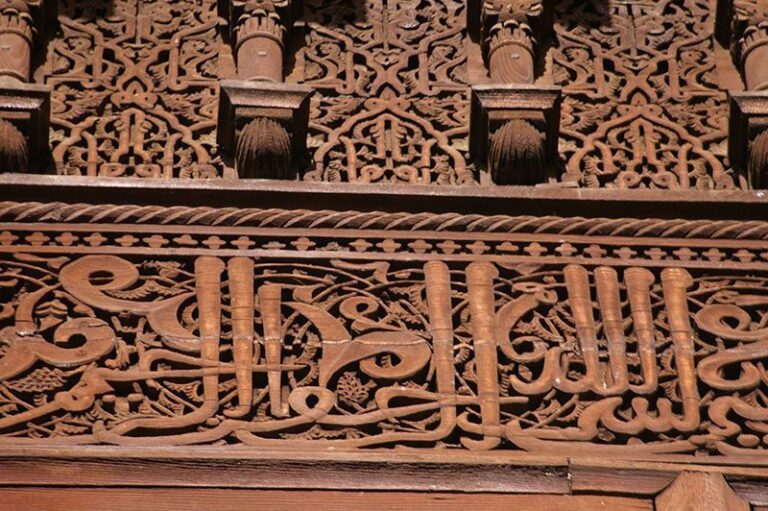Meeting with Redouane Kettani, back in Morocco after several years in Dubai. This lover of Moroccan tradition likes to sublimate and modernise it, but he wants it to remain adapted to the country …. I’ll let you discover why Redouane wanted to talk about parquet in Morocco!
Redouane Kettani, a Moroccan passion for decoration
I am thirty-five years old and I have just opened my own decoration agency in Casablanca, after having worked for several years in Dubai. I trained as a decorator in France and Belgium.
I loved working in Dubai: the decoration there plays on oriental codes, of course, but they are combined with modernism. The houses are big, the means are there, and they do very beautiful things.
The Gulf countries, Dubai as well as the others, have a bad reputation as far as ecology and sustainable development are concerned, but things are changing, many projects now take these aspects into account.
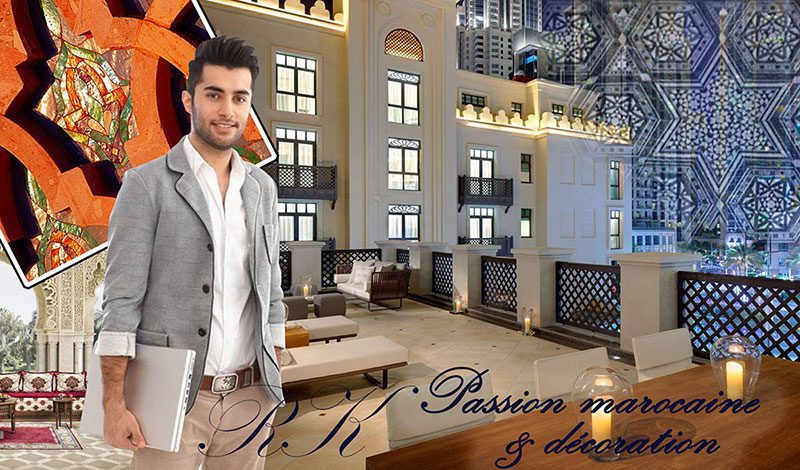
When I return to Morocco, I want to offer all this: a decoration that is first and foremost Moroccan, rooted in our culture, but which integrates the contributions of modernity. There are Moroccan designers who do fantastic things and that is what I want to focus on.
Look at how this salon integrates all the codes of oriental decoration by modernising them. A real no-fail!
A work by Art & Decoration Dubai, which specialises in this kind of atmosphere and which I particularly like.
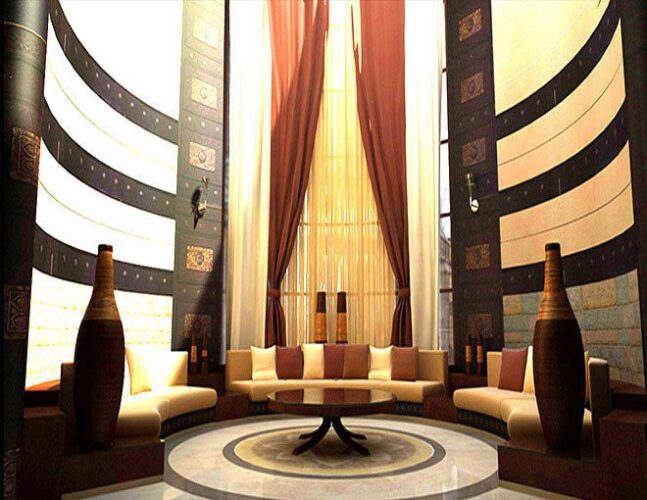
My banner depicts exactly that: a hotel in Dubai where I worked, a motif found in all Moroccan mosques, a Moroccan living room, another of our specificities, and precious marquetry like that of our craftsmen in Essaouira.
I want to work with ecological materials, to make my projects part of a sustainable development logic. We all have our part to play, however small, in the health of the planet. Global warming will be dramatic for us, but few Moroccans are aware of this.
Parquet flooring in a Moroccan house? A very bad idea!
In short, it is :
- an ecological aberration
- a fault of taste with a Moroccan decoration
- a practical problem
- the difficulty of finding good service providers
Parquet does not exist in the Moroccan tradition. Today it is widespread in Casa and in the big cities, as a sort of snobbery, we leave the “old things” behind, we want to be modern. The parquet floor came to Morocco with the French colonists, who built buildings as they knew them in France.
The best proof? In Darija and even in classical Arabic, there is no word for parquet. It is پارکت , barakat, which is simply the transcription of “parquet”. Or أرضية , ardyia, which means “floor” and is much more generic than floor. When there is no word, it doesn’t exist.
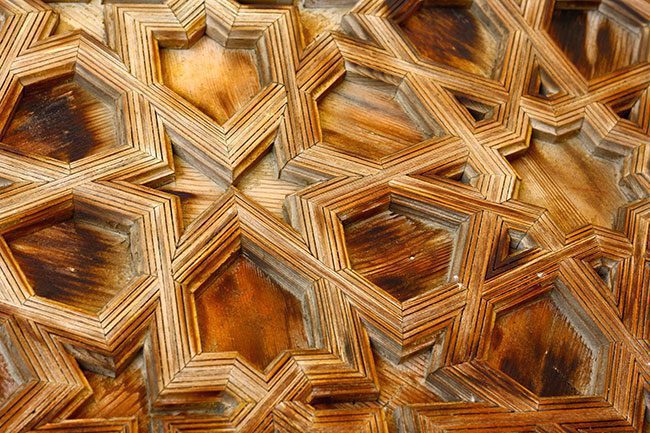
To have a good floor, you have to pay craftsmen trained abroad, import products, wood… the know-how doesn’t exist here, and I prefer ceramic or zellige floors, the old way.
Wood is rare in Morocco, and transporting it is expensive in terms of pollution
In fact, the parquet floors that are sold in Morocco are all made with foreign wood, which sometimes comes from very far away, like exotic wood. Even the more classic woods, oak and ash, are imported from European countries at best.
The basic principle of sustainable development is to use local materials.
At the very least, the sellers of parquet flooring would pay a carbon compensation for all the carbon dioxide injected into the atmosphere by transporting a heavy and voluminous material over long distances…
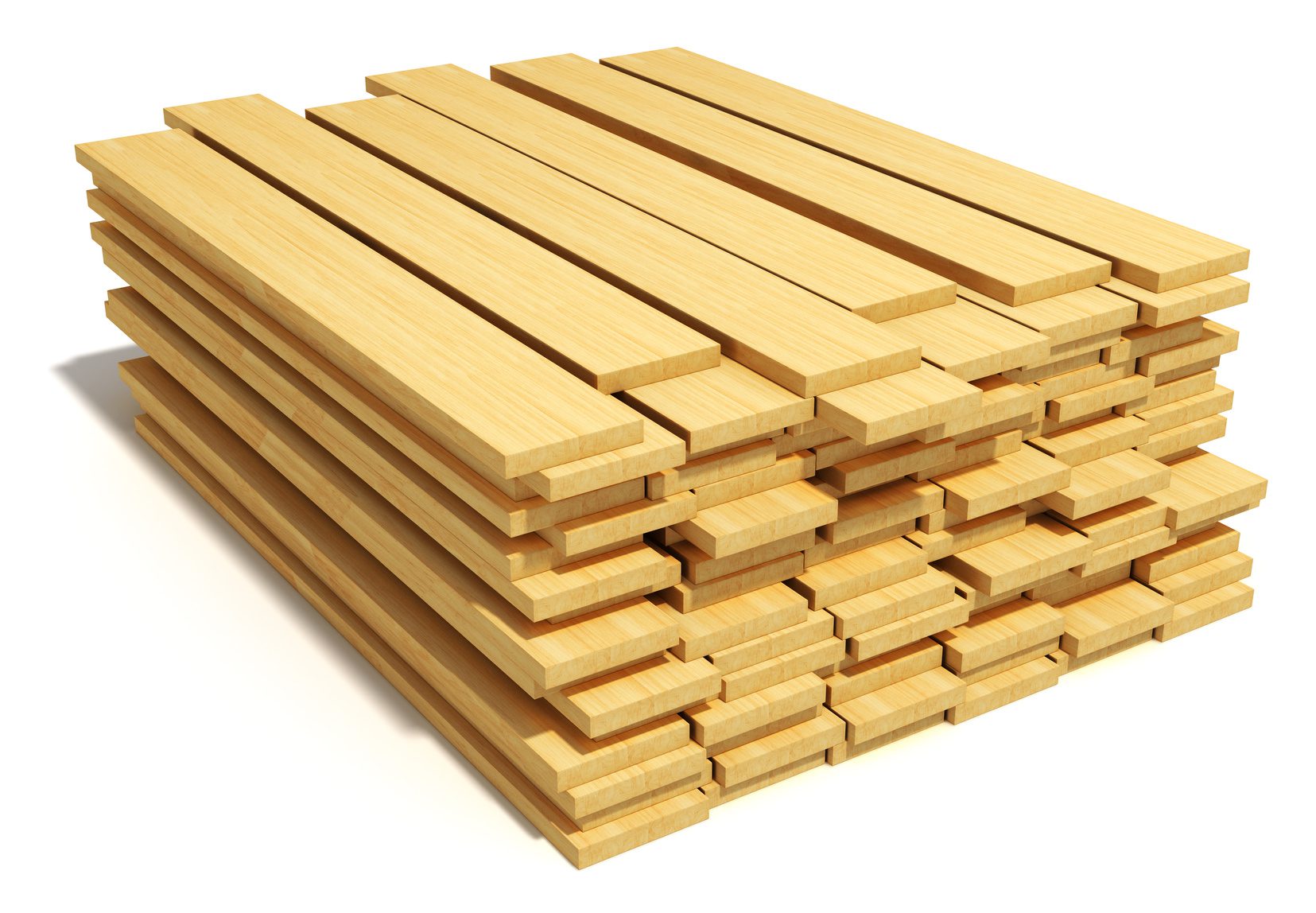
Stabilising the floor before laying it
One of the main difficulties in Morocco is adapting the wood to the conditions of the site.
Wood is a living material, it moves, depending on the temperature and especially the humidity.
It is therefore essential to store it for a certain period of time at the installation site and in good conditions (i.e. installed in such a way that the planks do not bend).
A certain time, but how long? Approximately three weeks at an average air humidity of 45%. Much longer at much lower or much higher humidity levels. This is very often the case in Morocco, with coastal cities on the one hand, or the semi-desert climate on the other.
Parquet sellers who respect this time limit are very rare. And when it is not respected, the parquet will play, creak…
Moroccan decoration uses wood on the walls, not parquet
Wood is used in Moroccan decoration. But it is worked so much that it is not walked on, nor hidden under the carpets.
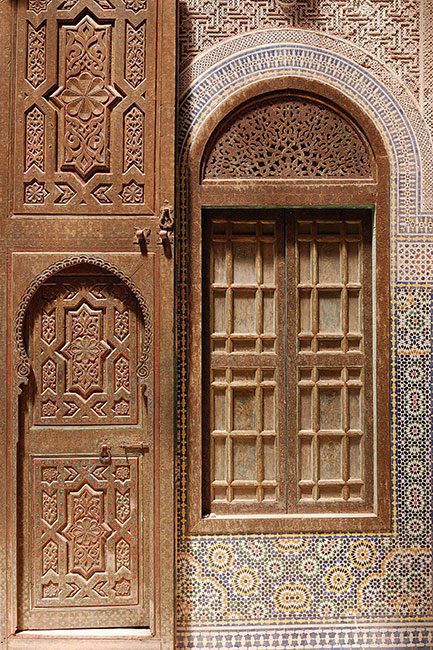
Moroccan wood is highlighted. Simply carved or painted, it is worked into walls, ceilings and furniture.
Painted wood
The most beautiful traditional doors and ceilings are painted. With precious colours, which were once made of valuable natural dyes, such as saffron and indigo.
Traces of paint can still be seen on the superb door of the Kasbah of Télouet.
The motifs are those of traditional geometric and abstract decoration, which can also be found in stucco and mosaics.
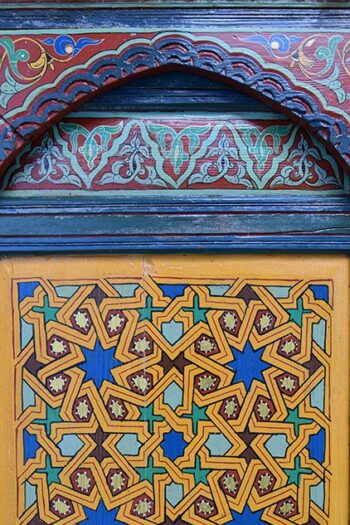
Polygons, stars and flowery frames run across the wood in a difficult-to-calculate arrangement, the secret method of which the mâalems jealously guarded.
The richer the house, the finer and more complex the decoration. If you go to Morocco, you must absolutely admire those of the Bahiah
Moucharabiehs
It is said that the moucharabiehs, these carved wooden grills that allow you to see without being seen, are not of Moroccan tradition but Ottoman, and imported.
In reality, the carved wood is also Moroccan. Look for example at the delicacy of the moucharabiehs of the Medersa Bou Inania, in Fez, decorated with suras of the Koran:
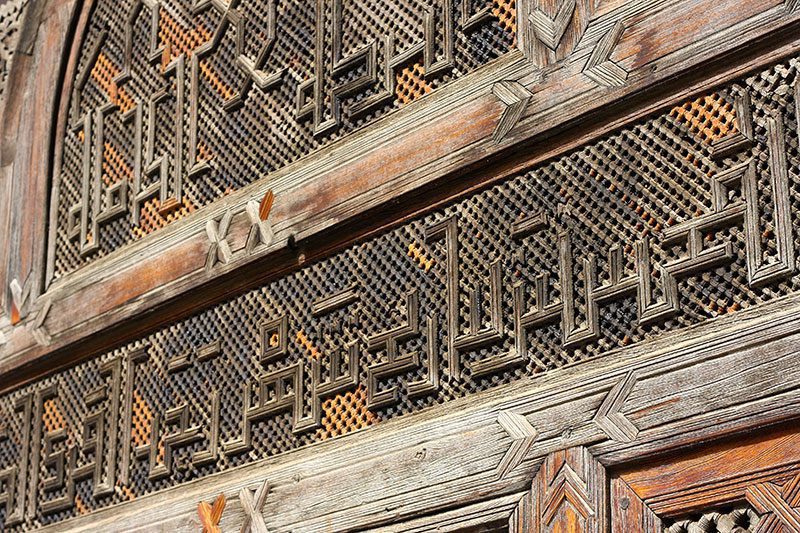
Maintaining your floor in Morocco? A challenge!
Our Mediterranean lifestyle is not compatible
Moroccan houses are adapted to a lifestyle in a hot country. The zellige (tiles) or marble floors help to cool the house, and in summer they are watered regularly to keep them cool.
We are used to taking off our shoes when we are in a house, the rooms are covered with carpets that cover the entire floor, only the corridors and the “useful” rooms (kitchen, etc.) remain tiled. Why install a parquet floor that is much more expensive than the local craftsmanship if it is to hide it?
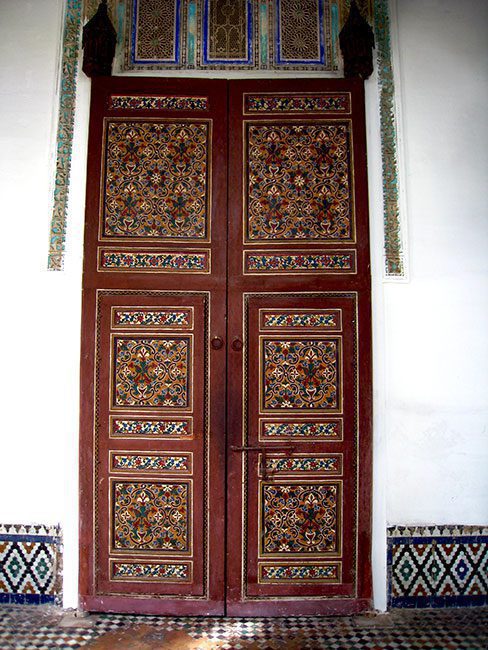
Moreover, the contrast between the mosaics on the floor and the decorated wood is part of the principles of decoration. One day I will write about these mosaics on my blog, which are like a coded language.
Variations in temperature and humidity
Apart from the coastal cities, which have a relatively temperate climate, the inland cities experience very large variations in temperature between seasons (especially in the mountains, the Rif, Fez, Ouarzazate). Parquet is much more stressed than “standing” wood (doors, shutters, painted ceilings) and will deteriorate much faster than in Europe.
Expensive to maintain
The maintenance of a ceramic or zellige floor is very simple: a wash with water, and that’s all.
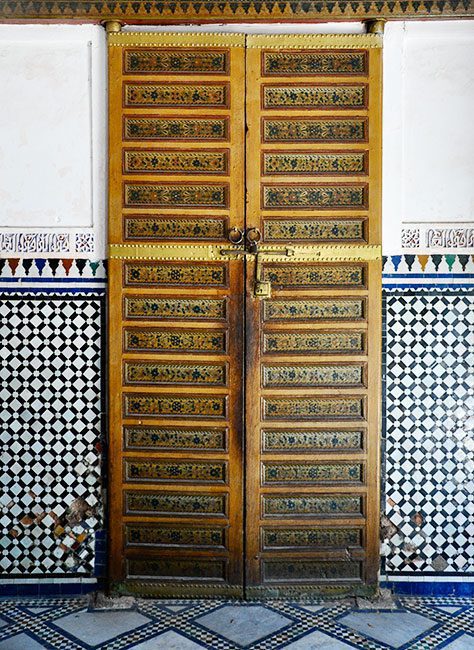
The zelliges you see here are often centuries old. Any local craftsman can easily replace the missing tiles with new ones that are still made identically.
For the daily maintenance of the parquet, imported products are needed, and it is necessary to regularly sand and re-varnish… a laminate floor will hardly last ten years.
In other words, parquet in Morocco is more expensive and lasts less than traditional flooring.
I know I will always try to convince my clients to use traditional flooring, and to use wood in other decorative elements…
Like these beautiful entablatures in the Bou Inania mosque
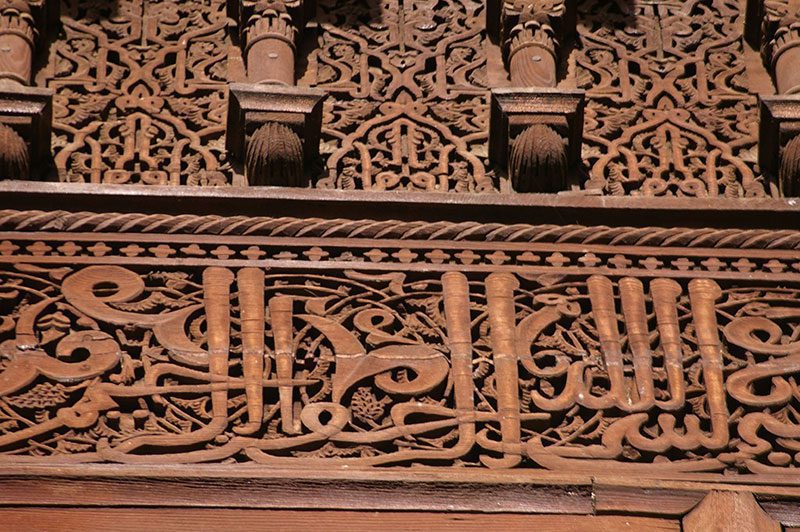
Redouane doesn’t have a website yet, but you can already subscribe to his brand new Facebook page
 A typo or syntax error? You can select the text and hit Ctrl+Enter to send us a message. Thank you! If this post interested you, maybe you can also leave a comment. We'd love to exchange with you !
A typo or syntax error? You can select the text and hit Ctrl+Enter to send us a message. Thank you! If this post interested you, maybe you can also leave a comment. We'd love to exchange with you !

